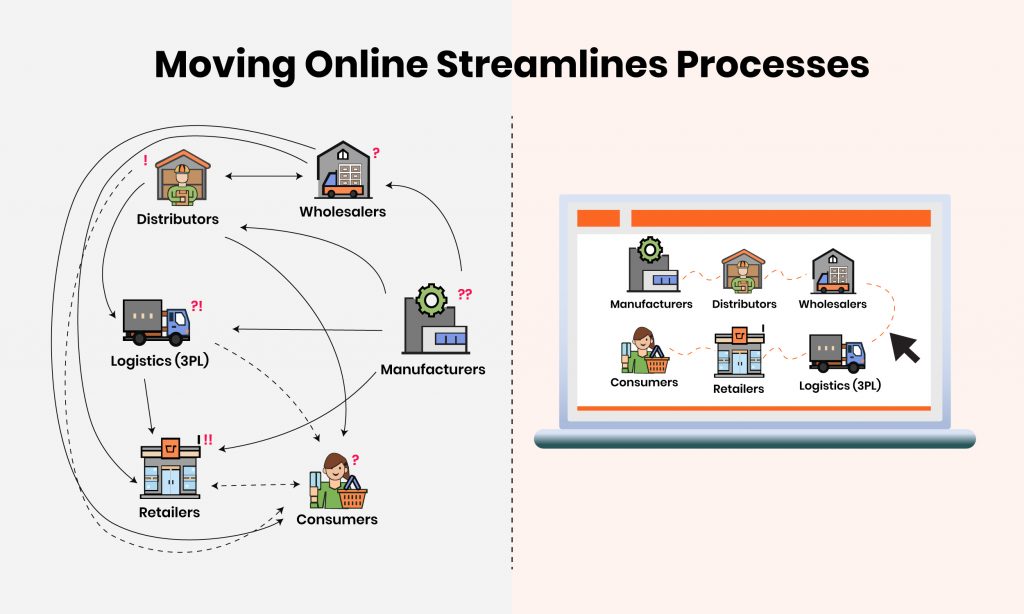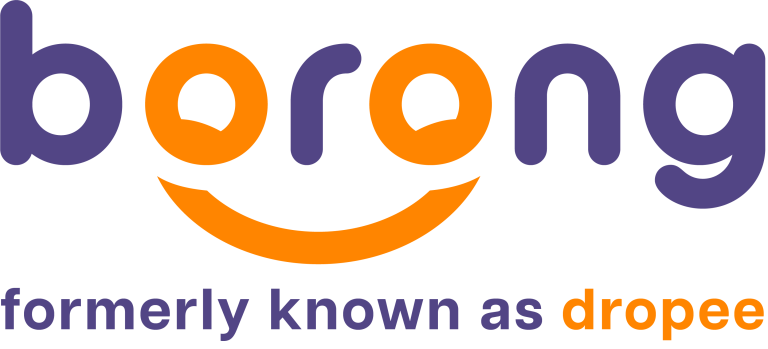From supply chain disruptions to consumer demand changes, industries across the globe are scrambling to adjust to the new normal. One of the most critical is moving online.
Going Digital is More Crucial Than Ever
Digitisation is no longer an option, it is an urgent need. In our article on the impact of the pandemic on B2B trade, an emerging trend in this space is the shift in embracing digital.
Why?
#1 Consumer Behaviour Has Changed

Consumer behaviour is no longer the same as before. With enforced lockdowns in most countries, consumers have amped up their screen times, from social media consumption to online shopping. This has quickly accelerated the importance of online channels.
According to a McKinsey report, 75% of first-time users of digital channels say they would continue to use them even when the situation returns to ‘normal’.
In other words, to stay ahead of the curve, businesses have to adapt accordingly.
#2 Increasing Pressure to Deliver Fast

With increasing pressure to provide faster fulfilment and better service, automation is key. After all, research conducted by Forrester in 2017 states that 73% of B2B buyers are tech-savvy millennials. By now, the numbers would have drastically increased.
The shift from offline to online isn’t just going to where consumers are, it’s also in how a business runs its day-to-day operations. It’s how wholesalers manage their inventory, how suppliers receive orders and how distributors forecast demand.
With streamlined operations and agile systems, businesses can effectively speed up the process.
Yet, many businesses are still hesitant to move online.
The Reluctance to Move Online: Breaking Down Traditional Beliefs
The industry is continuously evolving, yet, many businesses are slow – some are even reluctant – to adopt digital processes.
Some of these myths and beliefs below have discouraged businesses from keeping up with the times, but they aren’t necessarily true.
#1 Belief: “My traditional way has worked well for years. Why change?”
Fact: Old processes work well, but they do not work well enough.
The traditional way of buying and selling not only loses competitiveness in a saturated market, but it also adds complexity to daily operations.
Let’s take an example of how you, as a supplier, traditionally receive orders. Typically, you would accept orders via phone calls, faxes, messengers, emails and if you have it, online channels. In one day, you have to keep an eye on five different platforms.
Keeping track of various channels means complicated inventory management. If, say, you receive duplicate orders via a phone call by customer A, and a fax order by customer B for the same product, which customer gets the last inventory? Customer A or B?
Digitisation solves this problem.

By moving online, all of your orders would only be on one platform. You only spend your day reviewing one single channel for all of your orders.
A B2B software like Dropee’s, for example, means your sales reps and their customers can rapidly place orders on any device, anytime, anywhere.
#2 Belief: “I don’t see the immediate ROI.”
Fact: Moving online isn’t instant gratification, it’s a long-term solution to stay ahead of an evolving industry.
Businesses in China that were slow to adopt digital, the epicenter of the virus, were at a serious disadvantage in their recovery. This is because digitisation not only meets changing consumer demands, it also helps in speeding up operations.
Less manual and tedious tasks mean you save a fraction of your time to do what matters most. Instead of filing tons of paperwork, you can use the time to analyse the right insights to upsell to your customers.
In fact, going digital also allows you to have full transparency over your supply chain, from suppliers to retailers. More often than not, businesses have little insights into where their products actually end up at.

By moving online, you have full visibility over the entire supply chain, giving you total control. This means you have a wealth of data on your customers’ purchasing behaviour, which helps to inform your next decision.
#3 Belief: “It’s costly.”
Fact: Moving online is an investment that will benefit you in the long run.
Currently, most businesses hire admin staff to manage inventory – this includes hours and hours of tedious work, manually keying in product SKUs, and filing paperwork. But as mentioned above, this method is highly time-consuming.
Not only that, but it also takes more time and human resources to fix operational inefficiencies, such as duplicate orders, than subscribing to a digital system that’s designed to simplify workflow. With most of your back-end processes automated, it actually reduces cost.

In Malaysia, the average pay for an administrative clerk is around RM1.5k. More admins, more cost. Subscribing to a B2B software like Dropee Direct, however, only costs RM600* – and this system isn’t prone to human error. From order processing, handling deliveries to collecting payments, you can get it all done in one platform.
Additionally, most SaaS software is now customisable, which gives you greater flexibility in choosing the right package for your business.
*Dropee Basic Package
Next Steps on Moving Online
Consumer demand is a big factor in fuelling the need to move online – and so is cost-efficiency. With these beliefs and myths busted, it’s more apparent than ever that the shift to digital has to be prioritised today.
—
For businesses across Malaysia, Dropee is an e-commerce solutions provider that seeks to support our local B2B entities by providing them with a platform to help them streamline and manage their customers and inventories with efficiency and ease. We also help to connect businesses with one another via an online marketplace where they can reach out to more people in a fuss-free space.
To learn more about what we do, reach out to us for a free consultation with our team and get a headstart in digitising your business today!


